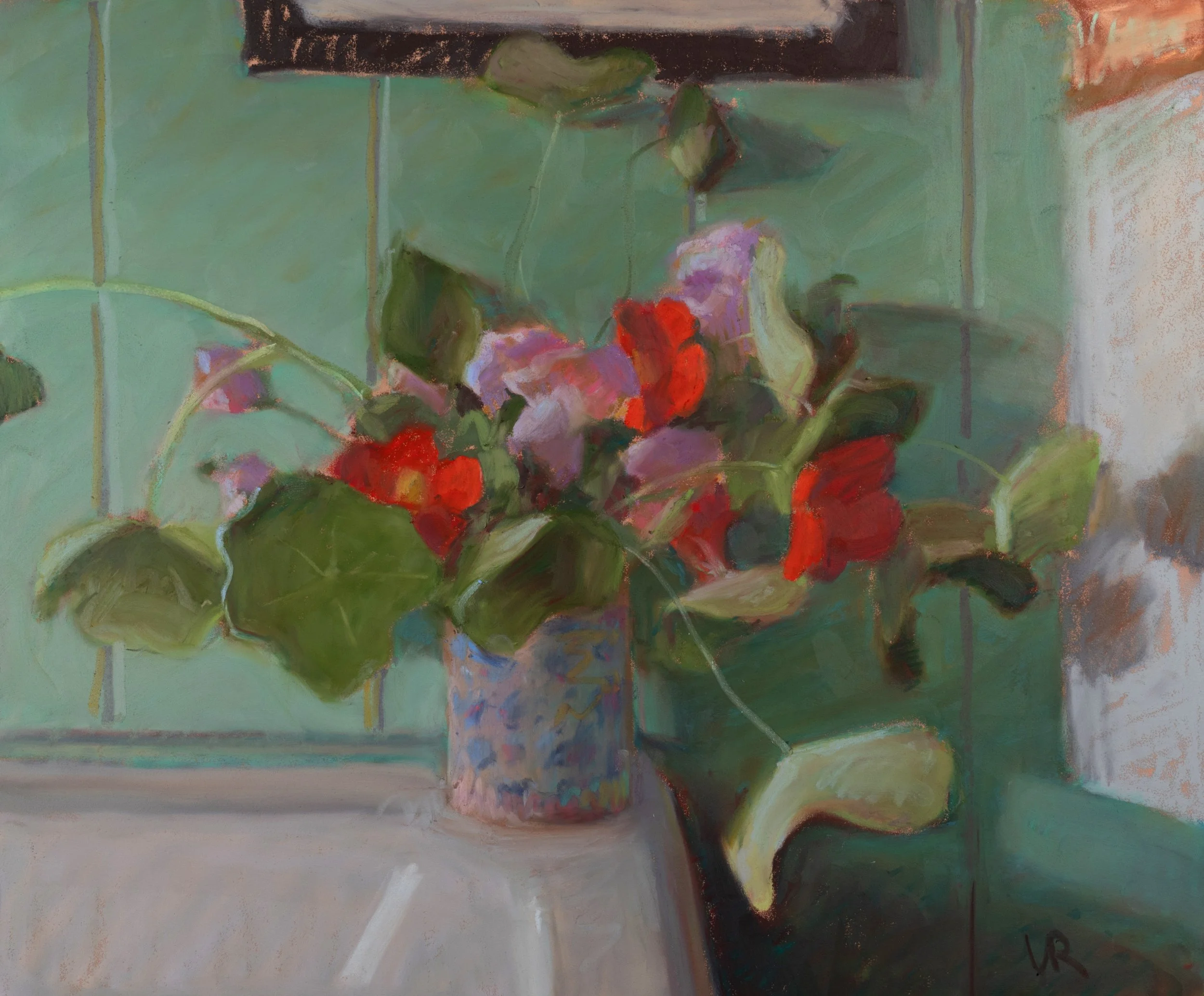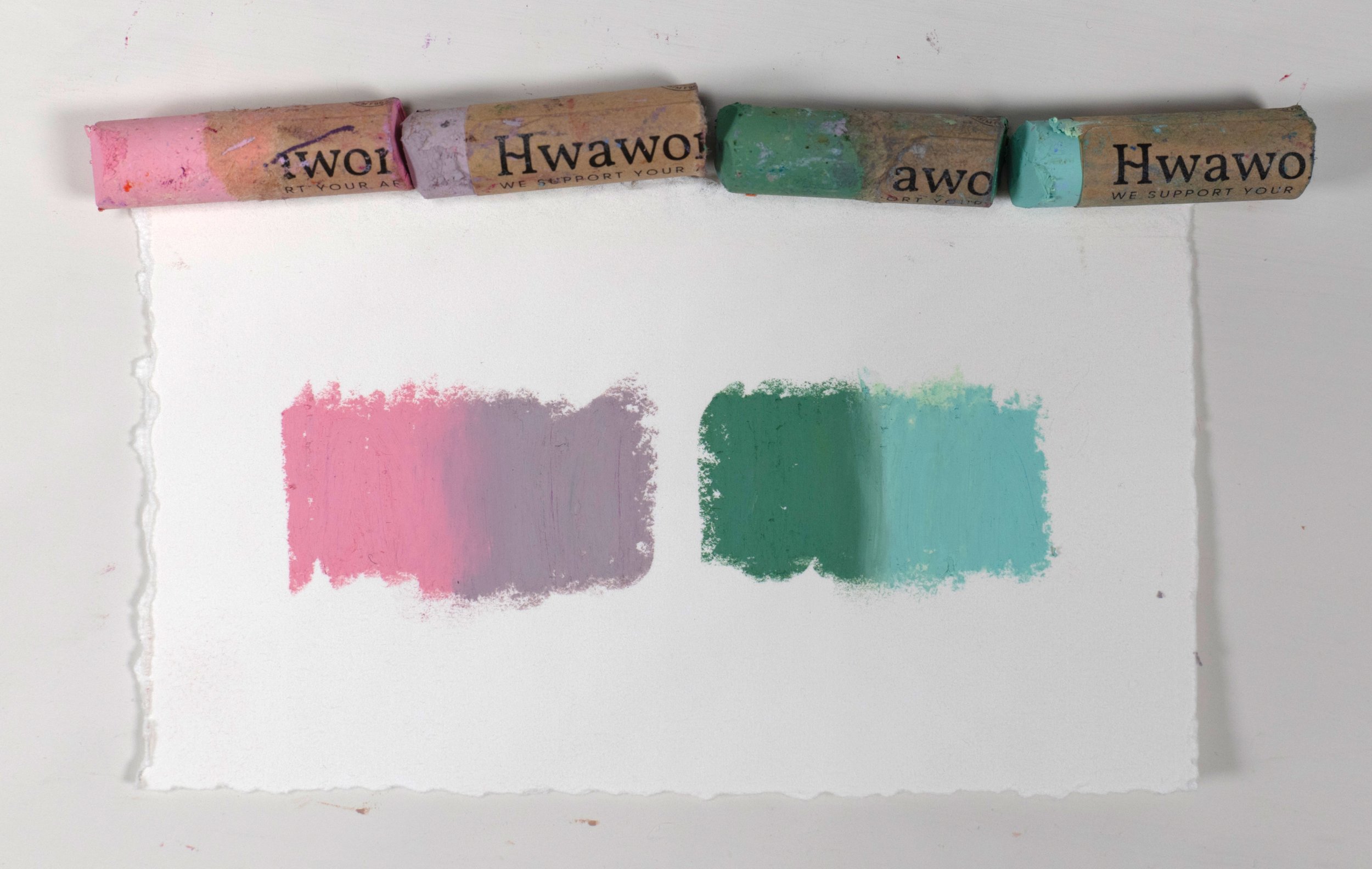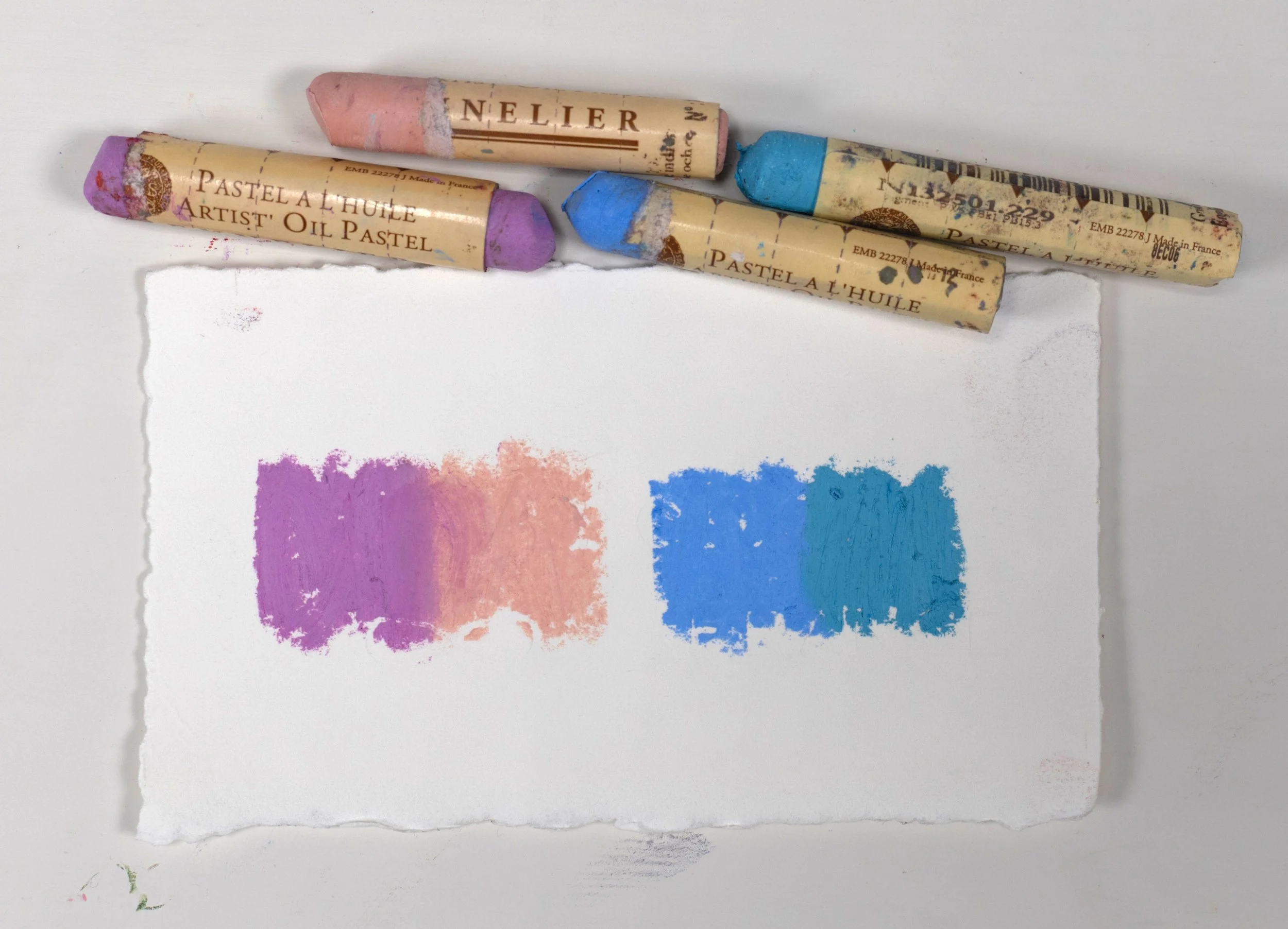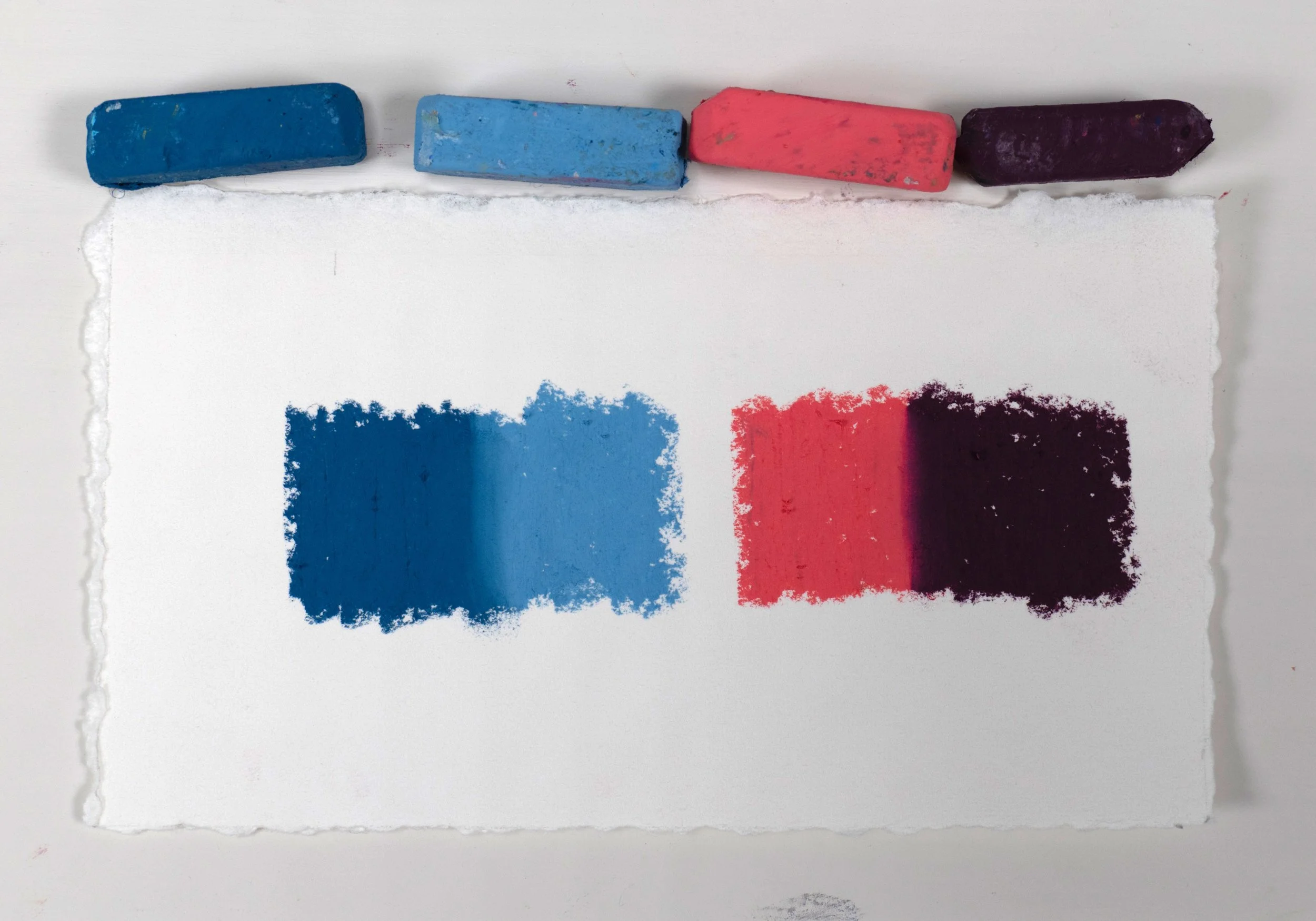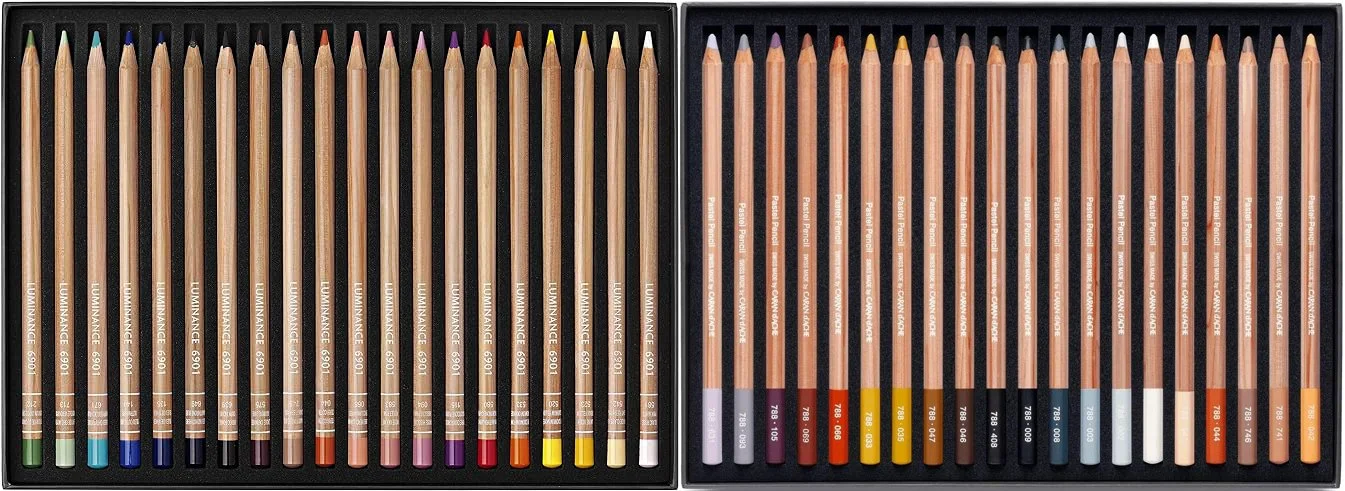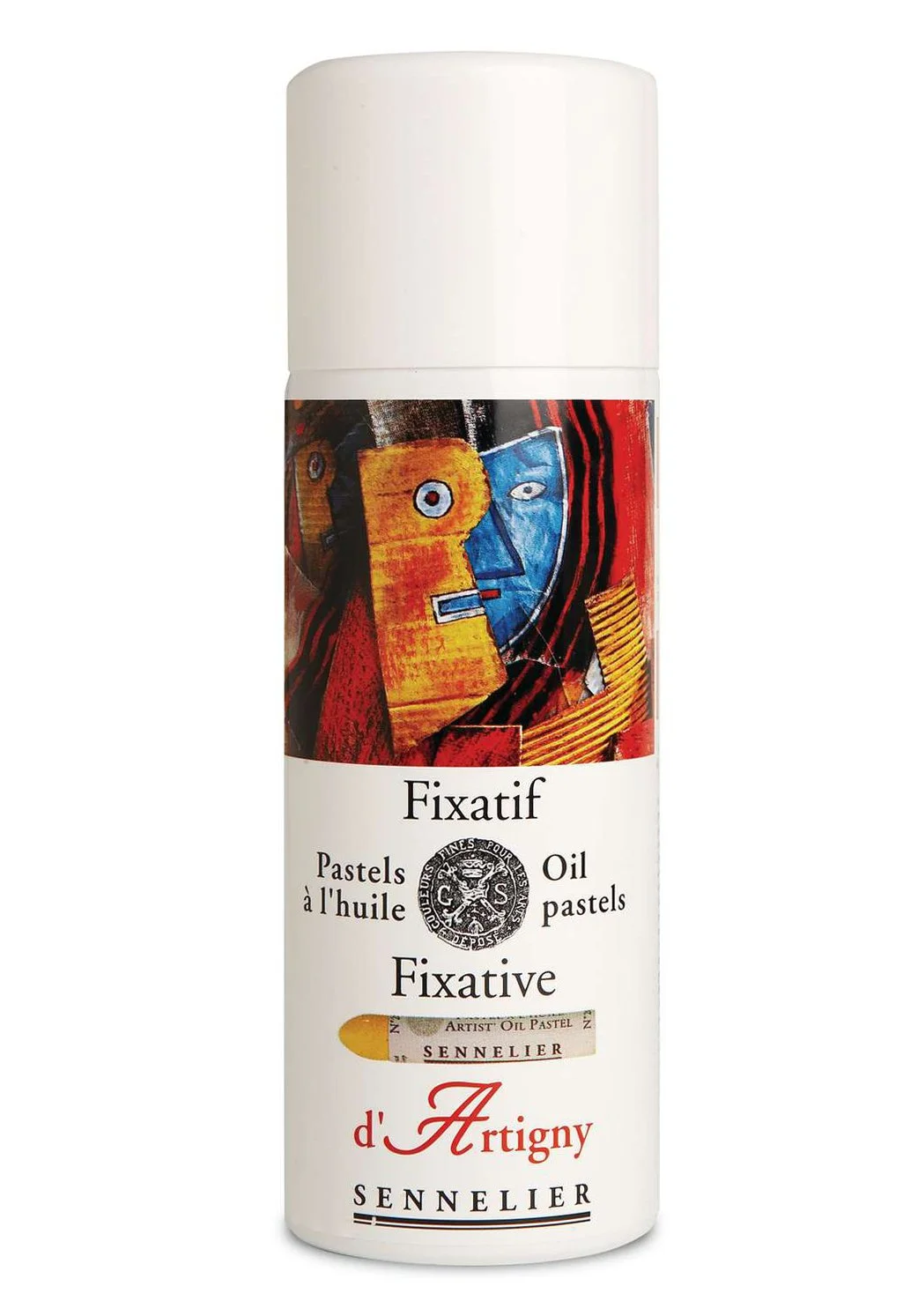Oil Pastel Supply List
*This article contains affiliate links. If you purchase something through one of these links, I may earn a small commission at no extra cost to yоu.
Since I have received many questions about oil pastels, surfaces, tools, fixatives, and other materials that I use with my oil pastels, I've decided to quickly answer all those questions here.
However, if you want to learn more about my approach to oil pastels, you can download my free 70-page Guide to Painting with Oil Pastels at the following link:
https://www.lenarivo.com/guide-to-oil-pastels
Oil Pastels
Since I find oil pastels a very interesting medium to work with, I have invested in several different sets to have a wide variety of colors because the truth is, no matter how blendable oil pastels are, having more colors makes the work easier and more enjoyable. Currently, I am using oil pastels from five different brands.
Mungyo Gallery Artists SOFT OIL Pastel
If I had to recommend just one set of oil pastels for someone new to the medium, it would be the Mungyo Gallery Artists' SOFT OIL Pastels in a set of 120 colors. In terms of quality and softness, these pastels are comparable to the well-known Caran d’Ache oil pastels, and are even a bit softer. The set includes an extensive range of stunning colors, including muted pinks, blues, yellows, and various useful grays and browns. Their opaque and velvety texture is simply perfect. Easy to apply, blend, and layer, they are also much more affordable than Neopastel or Sennelier oil pastels. Had I known about them when I first ventured into oil pastels, this set would have been my initial choice for experimentation.
Mungyo Artists' Artists SOFT OIL Pastel - Set of 120 on Amazon
https://amzn.to/41ViWVD
https://amzn.to/3u8CGZ0
If this set is out of stock on Amazon, you can buy it on eBay from South Korea. I often buy Mungyo pastels there, and they usually arrive quickly.
Mungyo Artists' Artists SOFT OIL Pastel - Set of 120 on Ebay
https://ebay.us/7vivPZ
Individual colors:
https://ebay.us/POVCPr
HWAWON Oil Pastels for Artist
Even though HWAWON oil pastels are slightly harder than Mungyo oil pastels, they are still soft enough to blend with a finger. Each color is rich and opaque. The 96-color set offers an impressive selection of beautiful muted colors that I personally value the most in painting with oil pastels. These pastels are half the price of Caran d’Ache Neopastel, and in my opinion, the color selection is better. They are the firmest on this list ( but this is only in comparison to very soft oil pastels; they are still considered soft in general), and as such, they are best suited for initial layers or used independently. Layering them over softer oil pastels might not be effective, but they blend and layer well on their own. These pastels, being a bit harder, tend to leave more crumbs than softer oil pastels when painting. However, this isn’t a problem. You can easily flick these crumbs away or blend them into the layer by pressing down on them. This 96-color set could also be a good option for beginners. Although, the Mungyo Soft Oil Pastel 120-color set previously mentioned surpasses it in terms of price, softness.
HWAWON Oil Pastels for Artist - Set of 96
https://amzn.to/3SigVhD
Caran d'Ache Neopastel
I instantly fell in love with these pastels the first time I tried them. After my experience with Sennelier oil pastels, which I liked but found difficult to control and often too transparent, the opaqueness and velvety finish of Neopastel pastels were a nice change. Their softness is just right, and the coverage is excellent. They blend and layer well. There are several Neopastel colors I can’t do without. I will list them in my guide. While the 96-color set includes many highly saturated colors that I don't use in my painting, this isn't necessarily a drawback. I'm sure that many artists would appreciate those vivid colors.
Caran d'Ache Neopastel - Set of 96
https://amzn.to/42duWkY
Sennelier Oil Pastel
Sennelier Oil Pastels are truly unique. They have the softness and oiliness of lipstick, blending as effortlessly as oil paint. I've found that the ideal surface for these pastels is a heavy-weight watercolor paper that absorbs oil well. On such an absorbent surface, these pastels layer beautifully, allowing for continuous modification of the painting by applying successive layers. They tend to produce a more painterly effect compared to the other oil pastels on this list. While I like them as much as Neopastel pastels, I rarely use them by themselves. My typical approach involves using them over firmer pastels, which I apply during my initial block-ins.
Sennelier Oil Pastel - Set of 72
https://amzn.to/3HxTfAT
Holbein Artist Oil Pastel
These pastels are last on my list, not due to any lack in quality, but because they are less accessible compared to the other pastels mentioned. Their quality and performance are fantastic. Soft and buttery, they offer high coverage. The square shape of these pastels facilitates intricate detailing and the creation of clean, sharp lines. This line of oil pastels also features several colors that I use daily in my painting ( I will list them in the guide.)
Holbein Artist Oil Pastel
https://amzn.to/3u63uJx
Homemade Colors
I also create my own oil pastel colors by melting oil pastels. In the oil pastel sets I own, there are many highly saturated colors I never use in my paintings. I melt and mix these colors to create subtler shades, which are more useful in representational painting. When in my videos, you see me using strangely shaped large square pastels; those are the ones that I created by melting Neopastel pastels. The large round ones wrapped with masking tape are the pastels that I made by melting Sennelier oil pastels. I will explain how I do it in detail and provide some of my favorite color combinations in my guide.
Oil Pastel Labels
I have removed the labels from all my oil pastels, with the exception of Sennelier oil pastels, which can melt in your hand without the labels. I then break the pastels into halves or thirds and include only one piece of each pastel in my “palette box”. This approach offers several advantages: it provides a clear view of all my colors (eliminating the need to search through labels), saves table space, and allows me to use the sides of the pastels to create broader marks and cover large areas more quickly. In the photographs above, you can see that I intentionally left pieces of the labels on the Mungyo and Hwawon pastels. I did this because I received these two sets only recently, and I want to keep track of how often I use the colors from them. Without the labels, these pastels would blend in with my other pastels, making it difficult to know when I use them.
Paper
As I mentioned earlier, I've discovered that absorbent surfaces, like thick watercolor paper or Sennelier's oil pastel paper, are ideal for painting with oil pastels. This is because these types of paper absorb the oil from the pastels, allowing your painting to become dry to the touch and ready to accept more layers of color.
Sennelier provides spiral pads featuring paper specifically crafted for oil pastels. This paper feels smooth during pastel application yet possesses the ideal texture for accommodating multiple layers. It also quickly absorbs the oil from the pastels, facilitating ease of painting. A major advantage of these pads is that each page is lined with glassine, a transparent paper, allowing for painting on both sides of a page. I own these pads in three sizes and find them perfect for storing oil pastels.
Sennelier Oil Pastel Pad 9x12 in
https://amzn.to/3vOS2T8
Any hot-pressed or cold-pressed, heavy-weight watercolor paper is suitable for oil pastels. Paper made of 100% cotton is ideal as it absorbs oil more effectively. While some tooth in the paper is beneficial for layering, excessive tooth can make achieving even color transitions in the initial block-ins more challenging. I typically use my fingers and blending stumps to work the colors into the paper. Once the large shapes are filled in with solid colors, layering becomes easier, and the paper's tooth becomes an advantage.
When working with cold-pressed watercolor paper, it's advisable to experiment with both sides and choose the one with less texture. On smooth, hot-pressed watercolor paper, you should allow a few minutes for each layer of pastels to be absorbed by the paper. Once the surface is dry, you can proceed to apply the next layer of pastels.
Arches Watercolor Pad 9x12-inch 100% Cotton Paper
https://amzn.to/3vVFF7S
Pastelmat paper offers a unique surface for oil pastel painting. However, in my experience, it may not be the best choice for Sennelier pastels. Since Pastelmat doesn't absorb oil, the painting remains oily indefinitely. While a fixative can protect the painting from smudging, I personally prefer not to use it with Sennelier oil pastels. I find Pastelmat more suitable for harder pastels, but I'm careful to be sparing with layers. Once the texture's 'teeth' fill up with pastel, it cannot hold any additional color. Despite these limitations, working on this paper is enjoyable. Its texture makes the pastel marks appear rich and vibrant.
Pastelmat Paper
https://amzn.to/3SbOim9
Ampersand Claybord is also well-suited for oil pastels due to its absorbent surface. Paintings created on these boards can be sprayed with a fixative and framed without the need for glass. The boards’ high absorbency ensures that oil pastels dry to the touch quickly.
Ampersand Claybord
https://amzn.to/48TY2bJ
Glassine Paper
Although oil pastels become dry to a light touch on absorbent surfaces, it's important to protect your artwork when using them on separate sheets of paper or panels. Glassine paper serves as an effective protective layer, safeguarding oil pastel paintings from dust and smudging.
Glassine Paper Roll
https://amzn.to/3SesnKV
Pencils
Painting small details with oil pastels can be challenging, so I occasionally turn to colored pencils for this purpose. It's important to use only wax-based or oil-based pencils with oil pastels, as they retain their color and value when sprayed with a fixative. Pastel pencils, on the other hand, should be avoided as they tend to darken significantly when a fixative is applied. Also, it's crucial to keep in mind that all pencil work should be completed before you begin applying oil pastels. Colored pencils do not perform well when applied on top of oil pastels
The pencils I use when working with oil pastels are the wax-based Caran d'Ache Luminance Pencils, but any other pencil of a similar nature can also be used
I also use these pencils for sketching out my composition, often opting for light beige colors, although any other light color can be used. The dark lines produced by ordinary graphite pencils can be visible through the layer of pastels, which is why I avoid using them with oil pastels.
Caran d'Ache Luminance Pencils
https://amzn.to/42cybt3
Sometimes, before beginning to paint with oil pastels, I create small pencil studies to refine the composition and establish the color scheme for my upcoming artwork. In such instances, I rely on pastel pencils, using Pastelmat paper as my drawing surface. Unlike wax-based pencils, pastel pencils leave bold and opaque marks, making them exceptionally suitable for detailed drawings. It's important to note that pastel pencils should not be combined with oil pastels; I use them exclusively on their own.
Caran d'Ache Pastel Pencils
https://amzn.to/3S7uYpS
Tools and equipment
I use these blending stumps to delicately soften edges on small shapes and to eliminate any white spots in areas where the oil pastels haven't completely covered the paper.
Blending Stumps
https://amzn.to/3w0mfyn
I always use a table easel when working with oil pastels and gouache. This practice ensures that my artwork is right in front of my eyes while I paint. When your artwork lies flat on the table, it can lead to a skewed perspective, often resulting in distortions of proportion in your drawing or painting.
Table Easel
https://amzn.to/3SyQNQE
Fixative and Framing
The only fixative for oil pastels I have experimented with is Sennelier D'Artigny Pastel Fixative. It makes oil pastel paintings completely dry to the touch and provides protection against dust and smudging. The application process involves five light coats, allowing each coat to dry for a minimum of 30 minutes. It's essential to apply this fixative outdoors.
https://www.dickblick.com/products/sennelier-dartigny-pastel-fixative
Even when a fixative is applied to an oil pastel painting, it should still be framed under glass.
In theory, it's possible to varnish oil pastel paintings for framing without glass, but I'm still in the experimental phase with this approach.
One of the questions I am being asked lately is “Did you leave gouache?” The answer is, no, I haven’t left gouache. I don’t really think in terms of being tied to a specific medium. I’ve always preferred not to define myself by the materials I use or the subjects I paint. Therefore, I didn’t label myself as an oil painter when I used oil, nor as a gouache painter when I worked with gouache, or a landscape painter when landscapes were my primary focus. Throughout my artistic career, I’ve followed my curiosity, striving not to limit myself through over-identification with any one medium.I adore gouache, especially for plein air painting. However, in the studio, I have always enjoyed alternating between gouache and other mediums such as oil, acrylic, casein, and tempera. After years of painting predominantly with gouache, I’ve become very comfortable with it, and it feels nice. However, my soul craves more creative challenges, and I am happy to embrace them. This year, I’m inspired to delve deeply into oil pastels, eager to learn as much as I can about them. It’s a challenging medium, which adds to the excitement of my exploration. When I learn something new, I prefer to fully immerse myself in the subject, and right now, that’s oil pastel.
I plan to provide a detailed explanation of my oil pastel painting process in the guide I'm currently writing.
I hope this list serves as a helpful starting point for those who feel inspired to explore the world of oil pastels.
Disclaimer: This page contains affiliate links. If you click on them and make a purchase, I may earn a small commission at no additional cost to you. I only recommend materials and tools that I personally use and enjoy.

